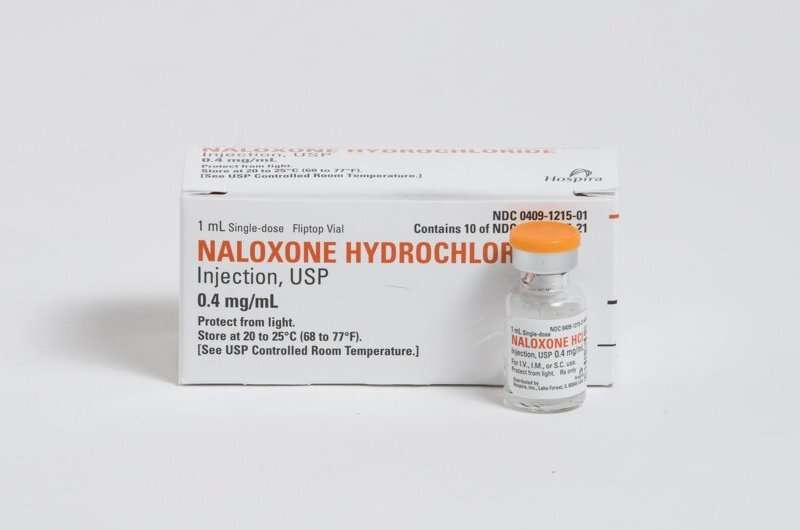No time to waste on tackling fentanyl in New Zealand

Fentanyl has been circulating the international illicit drug market since about 2013 and is responsible for approximately half of all overdose deaths in the U.S. So it was perhaps inevitable it would eventually cause problems for us in New Zealand.
Fentanyl is a strong opioid prescribed for pain relief that's found its way into street drugs here. Over Matariki weekend, 12 people were hospitalized in the Wairarapa with fentanyl overdoses after taking cocaine or methamphetamine that contained the drug.
However, unlike the U.S., we have a relatively small population of people who use opioids—approximately 30,000—reducing the risk of fentanyl getting into the illicit drug market. We also have tighter prescribing practices than the U.S.
So it's not inevitable that we will suffer the same problems with this synthetic opioid as North America—as long as we act on and learn from the overdoses in the Wairarapa.
While fentanyl has been found here before—it was detected in a sample tested in 2018 by the drug checking service KnowYourStuffNZ—recent events highlight several important issues in our approach to regulating illegal drugs.
First, prohibition has completely and utterly failed to stop people using illicit substances, or address and reduce drug-related harms. The recent fentanyl overdoses provide overwhelming evidence of the harms prohibition causes given people have to buy their substances in an underground market with no knowledge of the product's purity or content.
Imagine if we had the courage to tackle drug-related harms via drug law reform. The hospitalizations in the Wairarapa may have been avoided altogether. A recent New Zealand Drug Foundation poll found majority support for reforming our laws and taking a health-based, harm reduction approach to drug use.
Second—and this can't be expressed strongly enough—harm reduction interventions are absolutely crucial in saving lives. These interventions include drug checking, supply of fentanyl testing strips, early warning systems such as the government-funded High Alert website, and naloxone availability (a medication used to reverse the effects of opioids).
The international evidence is very clear: if we're to learn anything from the U.S. experience with fentanyl and opioid overdoses, it's that these kinds of intervention work.
Third, the availability of naloxone in New Zealand is woefully inadequate and this needs to be urgently addressed. It is not acceptable to say it is "complicated" and a "bureaucratic problem." Naloxone needs to be fully-funded and available to all who need it. That includes people who use drugs, their friends, family, community members, needle exchange programs, drug checking services, first responders—the list goes on.
Work on naloxone availability has been going on behind the scenes for years, but needs resolving now so we're prepared to deal with synthetic opioids like fentanyl. Opioid overdoses already take the lives of 46 people a year in New Zealand; having naloxone more widely available could prevent these deaths.
Sadly, stigma often intervenes in drug debates and people who use illicit substances are seen as less worthy and not as deserving of health care. People who use illicit drugs are not bad or evil or abnormal or weird. They are people, just like us, and are every bit as deserving of compassion and health care as we are.
There's been an outstanding response to events in Wairarapa from organizations such as the Drug Foundation, KnowYourStuffNZ, the Needle Exchange Program, police, ambulance services and High Alert—among others. The Level, a website run by the Drug Foundation, is providing information on drug checking clinics, while the Needle Exchange Program is selling fentanyl testing strips (also available via The Hempstore).
While the response from these organizations is be applauded, there is so much more we could do, even within a prohibition-focused framework.
We could develop and fund safe consumption sites for those who use illicit substances, providing places where overdoses could be attended to and harm reduction advice offered. International research demonstrates the effectiveness of safe consumption sites and their benefit for surrounding communities.
Permanent funding is also urgently needed for drug checking services and their expansion via the Needle Exchange Program and other agencies (work is already underway on this). As the Wairarapa cases demonstrate, legalizing drug checking was a smart and lifesaving move, as was implementing the High Alert early warning system.
While we're thinking about evidence-based approaches to reduce harm, "good Samaritan laws" should be considered. Good Samaritan laws mean those experiencing or witnessing an overdose who call emergency services for help won't be charged with offenses related to drug possession or paraphernalia, or prosecuted, as has happened previously in New Zealand.
Now is not the time for hollow, unrealistic, morally-based assertions like "people should not take drugs" which lack evidence to support them. We need to follow the evidence and we need to act, urgently, before lives are lost.



















